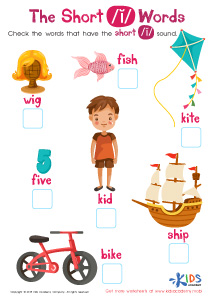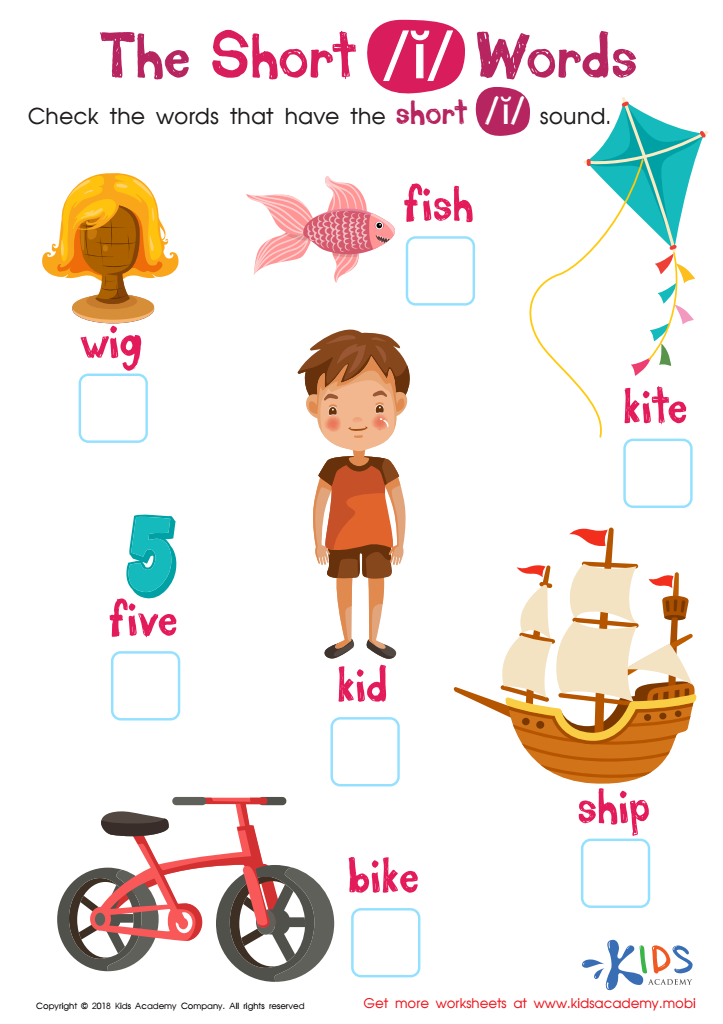The Short I Sound - Lesson for Kindergarten, Chapter - Letter Sound Relationships
In the lesson titled "The Short I Sound," kindergarten students will delve into the foundational aspect of early phonics and phonological awareness by focusing on letter-sound relationships. The core objective is to help students master the pronunciation and recognition of words that contain the short I sound, such as "sit," "lip," and "win." This understanding is crucial as it aids in the development of reading fluency and comprehension skills at an early stage.
By engaging with "The Short I Words Reading Worksheet," students will practice identifying, reading, and writing short I words, thereby reinforcing their ability to connect sounds with corresponding letters. This activity not only enhances their phonemic awareness but also builds a strong base for spelling and vocabulary growth.
Learning the short I sound is important because it is one of the foundational blocks of English phonics. Mastery of such basic phonics principles is essential for young learners as it supports their overall literacy development, enabling them to confidently progress to more complex reading and writing tasks. This early boost in phonological awareness and literacy skills lays the groundwork for their future academic success and fosters a lifelong love for reading.

-
Activity 1 / The Short I Words Reading Worksheet
Phonics requires that your child be able to properly differentiate and articulate sounds and letters of the alphabet. This can be tricky for your young kindergartners, especially as they first get into reading. As your child learns the different sounds, they will find that the easiest way to learn the phonetic sounds is by classifying them into long and short vowels. Introduce your young one to the short «i» sound with this printout worksheet.


